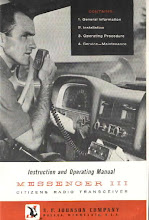 To say that Merde is a surprising addition to the slim oeuvre of Leos Carax is to put it mildly. The last frames of celluloid to be screened in his name contained one of the most outré performances of the recently deceased Guillaume Dépardieu playing the publicity-shunning author who had descended in a clinamen-like fall from the stratum of the French haute-bourgeoisie to the world of the sans-papiers. Yet when Denis Lavant returns to Carax’s world – after a 16 year hiatus – he, in some senses, returns from the same depths as the neo-Mellvillian protagonist of Pola X.
To say that Merde is a surprising addition to the slim oeuvre of Leos Carax is to put it mildly. The last frames of celluloid to be screened in his name contained one of the most outré performances of the recently deceased Guillaume Dépardieu playing the publicity-shunning author who had descended in a clinamen-like fall from the stratum of the French haute-bourgeoisie to the world of the sans-papiers. Yet when Denis Lavant returns to Carax’s world – after a 16 year hiatus – he, in some senses, returns from the same depths as the neo-Mellvillian protagonist of Pola X.The Melvillian dimension is once more in evidence. Faced with the threat of being hanged for his crimes M. Merde responds twice “I don’t want that”. This Bartleby for our times lives in an underground chamber in the subterranean sewer system of Tokyo. The torrents in which Pierre and Isabelle are swept up in the dream sequence of Pola X give another allegory of uncanny space in Carax’s imaginary. Here, as in the television version, and in the opening credits of Pola X, the backdrop is war. In M. Merde’s hideout there are vestiges of 1937, the "heroes of Nanjing", hand-grenades and even a tank.
Following a series of comically misanthropic incursions on social normativity M Merde, like a distressed Joker-Penguin hybrid from Batman deluges a busy Tokyo pedestrian street with hand-grenades. Tracked to his lair he is detained for three years before being executed.
The echoes of the grand guignol version of Batman to which certain directors of instalments have been drawn recur in the character of the French lawyer who takes on the case of M Merde, having become associated with his cause because he claims to be able to communicate with him. Prior to this revelation Carax shows us him in action as an older double for the man from the sewer, with the same puckish beard, one blinded white eyeball and the same twisted gait and half-palsied right side. He will come, then, to represent M Merde in both senses of the term.
The uncanny double is a feature of the gothic genre in literature which has echoes in Carax’s film, but which permeates the horror genre and finds itself revitalised in contemporary films by Ruiz and Lynch.
As Merde comes back to life, in a resurrection prefaced by the Christ-like figure arrested by
 the Tokyo police, and observed by his last-supper (flowers and money/fric) providing observers, the shot of an empty noose is followed by a caption: Next instalment: 'Merde in USA' over a close up of Abraham Lincoln with a M. Merde makeover beard.
the Tokyo police, and observed by his last-supper (flowers and money/fric) providing observers, the shot of an empty noose is followed by a caption: Next instalment: 'Merde in USA' over a close up of Abraham Lincoln with a M. Merde makeover beard.Merde like Beckett’s O (played by Buster Keaton) in Film shuns self-perception. He has never seen his reflection; the skin of his back is adhered to by a black fabric square. He loves life but hates people. He eliminates perceivers, shuns representation, but communes with a (legal) representative.
It is testament to the fervour of Carax’s imagination and wit that in an instalment in an omnibus film like Tokyo! he can succeed in making such a playful and inventive genre film, pay homage to Godard (Made in USA), reinvent the irrepressible Denis Lavant and make the viewer feel that somehow, for these small wonders, it has been worth the wait.

No comments:
Post a Comment